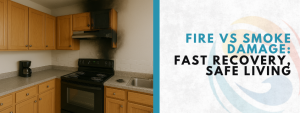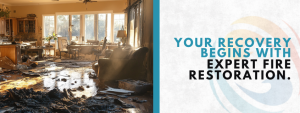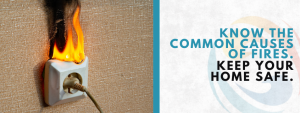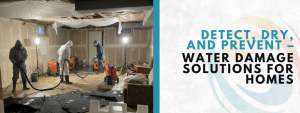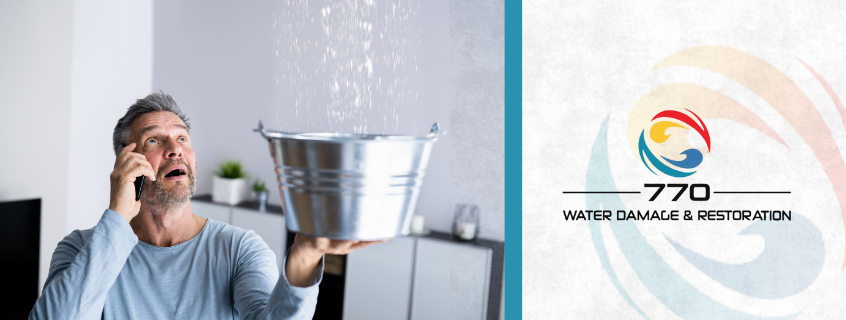
Imagine waking up with a sore throat, itchy eyes, or a lingering headache—even after a good night’s sleep. You brush it off, thinking it’s allergies or just stress. But what if your home—the place where you feel safest—is the real reason behind your discomfort? Many people don’t realize that the environment inside their home might be harming their health.
Today, we’ll explore the top 7 signs your home is making you sick. These warning signs are often easy to ignore, but understanding them can help you take the right steps to feel better and live healthier. From hidden mold to poor air circulation, your home might be sending signals—it’s time we started listening.
1. You’re Always Tired but Don’t Know Why
You sleep 7 to 9 hours. You eat pretty well. You’re not running marathons. But you still feel drained. If you’ve checked with your doctor and ruled out health conditions, it might be something in your living space.
One of the earliest signs your home is making you sick is unexplained fatigue. Poor indoor air quality or carbon monoxide leaks can affect oxygen flow to your brain, making you feel sluggish and unfocused.
Here are possible culprits that hide in plain sight:
- Carbon monoxide leaks: Colorless, odorless, and deadly. A slow leak won’t kill you immediately, but can cause fatigue, dizziness, and brain fog.
- Off-gassing from furniture: New carpets, sofas, or pressed wood products often emit VOCs (volatile organic compounds) that make you feel tired or sick.
- Blocked HVAC filters: When air doesn’t circulate properly, dust and allergens stay in the air, making it harder to breathe and stay awake.
Tip: Install a carbon monoxide detector and replace HVAC filters every 90 days.
To explore reliable ways to inspect your space and breathe cleaner, safer air, check out these restoration services that can help.
2. Skin Rashes and Allergies Keep Popping Up
One of the clearest signs your home is making you sick is when you notice skin issues that only appear indoors. Rashes, hives, or red itchy patches could be your body’s response to your environment, not your diet or skincare routine.
Here’s what might be irritating your skin:
- Mold spores: Even invisible mold can cause allergic skin reactions.
- Dust mites: Tiny bugs that thrive in bedding, couches, and rugs.
- Household cleaners: Some surface sprays or floor polishes contain harsh chemicals that linger on skin or in the air.
Allergy Triggers Table
| Trigger | Where It Hides | Symptom Type |
| Mold | Behind walls, under sinks | Skin irritation, asthma |
| Dust Mites | Bedding, carpet, curtains | Sneezing, itchy skin |
| VOCs | Paints, glue, furniture | Rash, dry skin, headaches |
These issues often worsen in tightly sealed homes where air doesn’t move freely. Skin discomfort inside your home? That’s another big red flag pointing to signs your home is making you sick.
3. You Smell Something Musty, But Can’t Find It
That earthy, damp, basement-y smell. You’ve cleaned everything, but it’s still there. That odor might be telling you something: mold or mildew could be growing behind your walls, floors, or ceilings.
Musty smells aren’t just unpleasant—they’re also serious signs your home is making you sick. Mold releases microscopic spores that float through the air. Even if you can’t see the mold, you may already be breathing it in.
Common hidden mold spots include:
- Behind wallpaper
- Under bathroom tiles
- Inside HVAC systems
- Under kitchen sinks
Mold Warning Signs:
- Strong odor that doesn’t go away
- Brown, black, or green patches on walls or ceilings
- Increased sneezing or coughing inside the house
If you’re dealing with lingering odors and mystery illnesses, you may want to get expert help to uncover what’s behind your walls.
4. You Cough More at Home Than Anywhere Else
A persistent cough that never seems to go away is another one of those sneaky signs your home is making you sick. If your cough gets worse at home but improves elsewhere, it’s time to look around your space.
Possible causes include:
- Poor ventilation: Traps stale air, making it hard to breathe.
- Pet dander: Invisible allergens float in the air and irritate your lungs.
- Chemical exposure: Air fresheners, candles, and even laundry detergents can contain artificial scents that trigger coughing fits.
Common Irritants List:
- Scented candles with paraffin
- Synthetic air fresheners
- Detergents with heavy fragrance
- Poor kitchen ventilation during cooking
- Lack of humidifiers in dry seasons
Keeping indoor air clean is essential, especially during the winter months when windows stay shut. If your cough clears up as soon as you step outside, that’s a sure indicator of signs your home is making you sick.
5. Frequent Headaches Without a Clear Cause
A dull ache behind your eyes or a pounding temple after sitting at home all day? Frequent headaches may point to problems with your indoor air or exposure to chemicals. This is one of the less obvious yet very real signs your home is making you sick.
Headaches can stem from:
- Too much CO2: Poor airflow leads to carbon dioxide buildup.
- Synthetic fragrances: Many perfumes and candles contain chemicals that trigger migraines.
- Humidity issues: Too humid? You risk mold. Too dry? You risk sinus pressure.
How to Lower Headache Risks:
- Open windows for 10 minutes each day
- Use air purifiers with HEPA filters
- Choose fragrance-free or natural products
When you track where and when your headaches start, you might realize they hit hardest at home. That’s when it’s clear—signs your home is making you sick are more than just a feeling.
6. Strange Noises, Drafts, or Humidity That Never Balances
Sometimes, your home feels off before your body reacts. Uneven temperatures, weird drafts, or unexplained sounds in walls could all be environmental indicators.
These subtle cues can suggest deeper structural or moisture problems, ones that can eventually impact your health. For example, a drafty window may be letting in pollutants or letting out clean air. A gurgling sound in your walls? Could be a water leak—hello, mold.
Things to Listen, Feel, or Watch For:
- Water spots or bubbling paint on the ceilings
- Uneven floor temperatures
- Dry eyes and cracked lips from indoor air imbalance
- Sounds like water dripping or pipes rattling
All of these sensory clues can tie into the bigger issue of signs your home is making you sick, because your body and house are both trying to tell you something’s wrong.
7. You Feel Better When You Leave Home
The most powerful proof? You feel better when you’re away from your home.
This is the most undeniable of all the signs your home is making you sick. If your symptoms improve while you’re on vacation, at work, or even shopping, your home may be the source.
That means the air, walls, or systems around you could be slowly contributing to your illness.
Checklist of Relief Signs:
- No sneezing or congestion while outside
- Skin clears up during travel
- Sleep improves when away from home
- Headaches vanish when not at home
Homes aren’t just buildings—they’re living ecosystems. When something’s out of balance, it affects everything inside, including you.
And if your relief is obvious the moment you’re elsewhere, it’s likely time to talk to professionals who can inspect and restore the health of your space.
How to Make Your Home Healthier Again
If any of these symptoms or warning signs sound familiar, don’t worry—there are steps you can take to feel better and fix your home environment. Making small changes now can lead to big improvements in how you feel each day.
Top Home Health Tips:
- Use non-toxic cleaners and avoid air fresheners with chemicals
- Keep humidity between 30–50% using a humidifier or dehumidifier
- Replace old carpets with hardwood or washable rugs
- Clean vents and ducts at least once a year
- Test for radon and install CO detectors
- Inspect for mold after any leak or water damage
Even if you can’t see the problem, your body may already be reacting to it. The most overlooked signs your home is making you sick often hide in everyday discomforts—those minor symptoms we shrug off until they grow into serious issues.
Final Thoughts
Your home should be your sanctuary. It should help you heal, not make you sick. The good news is, once you’re aware of the signs your home is making you sick, you can take action and make your living space a place that truly supports your health.
Look around. Sniff the air. Listen to what your body tells you when you walk through your front door. If things feel “off,” they probably are. But the fix doesn’t have to be overwhelming. Start small, stay curious, and trust your instincts.
Because when your home feels good—you will too. If you’d like a quick way to start your journey to a healthier space, visit this trusted resource that provides expert restoration solutions right now.
Frequently Asked Questions: How Do I Know If My Home Is Making Me Sick?
How can I tell if my home is affecting my health?
If you feel sick at home but better when you’re away, your house could be the cause. Common signs include coughing, fatigue, rashes, or constant headaches indoors.
What are the first steps I should take if I suspect my home is making me sick?
Start by improving ventilation and checking for mold, water leaks, or chemical odors. Installing air purifiers and replacing filters can also help right away.
Can mold really make me feel sick even if I can’t see it?
Yes, hidden mold behind walls or under floors can trigger allergies, skin irritation, and breathing problems. A musty smell is often your first clue.
Are carbon monoxide and poor air quality linked to tiredness or headaches at home?
Absolutely—low-level carbon monoxide or trapped indoor air can reduce oxygen, leading to fatigue and brain fog. Use detectors and open windows regularly.
Is there professional help available to make my home healthier?
Yes, trained restoration experts can inspect for hidden damage, moisture, and air quality issues. They offer tailored solutions to restore a safe, healthy living space.


